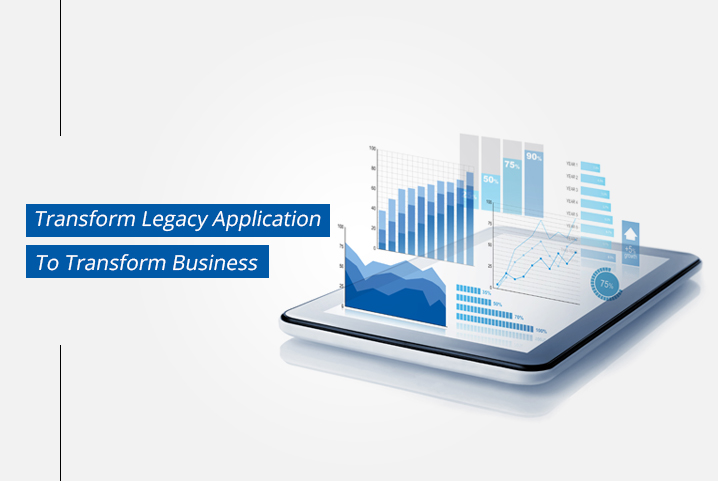In the digital age, information systems have become critical assets for enterprises. However, to leverage maximum value from these assets, organizations must ensure their continuous updating to prevent them from turning obsolete and outdated. Experts suggest that enterprises must focus on an application modernization strategy that takes into account the strengths and weaknesses of their existing IT systems. By doing so, enterprises can easily adapt to the rapid pace of technology evolution as well as meet business goals efficiently. In this blog, we discuss some of the factors that make legacy application modernization a must-have for modern-day enterprises.
The Pros
With application modernization, enterprises can refract and consolidate their legacy systems according to existing business needs. These changes offer a host of operational and functional benefits, including:
1. Stay Competitive and In-demand.

Today businesses desire agile solutions that can not only deliver products/services faster but also easily respond and adapt to changing market demands and needs. With legacy application modernization, businesses have the tools and capability to stay competitive and serve customer demands consistently.
2. Overcome Technical Debts

Technical debts arise from fixing technical hurdles with short-term solutions. Most organizations do not realize that these short-term fixes can have many hidden side effects. Further, technical debts can have many faces, including data, redundant programming, outdated design, etc.
Managing technical debts can be both time consuming and costly. Modernizing legacy application will not only ensure that technical debts are kept at permissible levels but will also prevent them from bringing business operations and functions to a standstill in the long run.
3. Identify New Revenue Opportunities
With legacy modernization, it becomes easier for companies to add new features to their products and services. This not only adds business value but also creates new revenue streams.
4. Improved Customer Service
Legacy modernization improves application capabilities as well as makes it easier to diagnose incidents that can impact customer experience. Minimal application incidents, coupled with easy maintenance, helps businesses to increase usability as per customer needs and demands.
5. Make Most from Digital Transformation
Whether they like it or not, enterprises of all scale and size must adopt new-age digital solutions like cloud computing, salesforce, BI, IoT, etc. However, to make maximum gains from these solutions, enterprises must have the IT infrastructure to make the digital journey effective, efficient, and business-friendly. Legacy modernization ensures that businesses tick all the right boxes for digital transformation success.
The Cons
For most enterprises, time and cost remain a primary concern in their legacy modernization strategies. Along with these factors like workforce training, prioritizing multiple legacy applications can also strongly impact end goals and business value. In the worst of cases, poorly implemented legacy modernization techniques may lead to side effects like vulnerable business & customer data, complex workflows, etc.
The Challenges
Compatibility is one of the recurring challenges that enterprises frequently face. While legacy IT systems may still be working, they do possess a constant threat to business operations. In the long term, they can completely paralyze business activities and subsequently impact business value and growth. In addition to compatibility, enterprises must also overcome challenges like IT skill shortage, user adoption, costs, etc.
Outsourcing: A Viable Solution
Identifying the right technique and toolsets is the first step towards legacy modernization success. Ironically, this also happens to be the most difficult one. Most enterprises lack the knowledge and skillset to identify, evaluate, and prepare a modernization roadmap in line with their business capacity and needs. Of late, outsourcing has become the most preferred option for enterprises to overcome legacy modernization challenges in a cost-effective way. Pratham, a leading provider of offshore product development service, has a proven track record of meeting customer expectations with tailored application modernization solutions. Our team has the experience of working with most of the application modernization tools.









